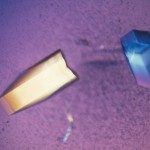Lien vers Pubmed [PMID] – 26403487
Chemistry 2015 Nov;21(48):17158-71
In the last few decades, bioluminescent systems based on the expression of a luciferase and the addition of a luciferin to monitor the emission of light have become very important tools for biological investigations. A growing proportion of these systems use coelenterazine or analogues of imidazo[1,2-a]pyrazine luciferins along with photoproteins or luciferases from sea creatures such as Aequorea, Renilla, Gaussia or Oplophorus. Central to the success of these tools are the synthetic pathways developed not only to prepare the naturally occurring luciferins, but also to design altered compounds that exhibit improved bioluminescence. Current work is indeed focused on the design of systems exhibiting extended luminescence (“glow” systems) or redshifted wavelengths, as well as constructions better adapted to conditions in cells or in vivo. This review describes the synthetic pathways used to prepare imidazo[1,2-a]pyrazine luciferins along with the research efforts aimed at preparing analogues even better suited to the design of assays.

